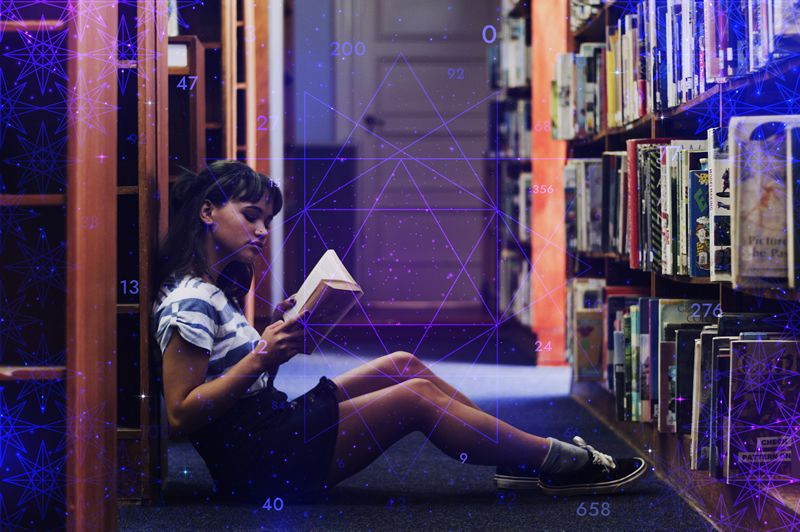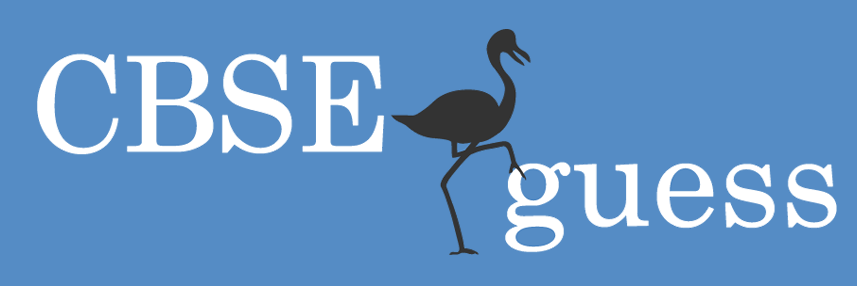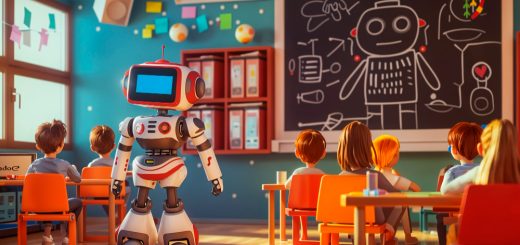How AI and Blockchain Are Disrupting the Legacy Education System
Smart Contracts, Smarter Students: Education’s Digital Disruption is Here
For centuries, the model of education has remained remarkably consistent: a centralized institution, a standardized curriculum, and a teacher imparting knowledge to a group of students. The final output is a paper certificate, a credential whose verification is often a slow, manual process. This legacy system, with its one-size-fits-all approach and bureaucratic friction, is now facing a seismic shift, driven by two of the most powerful technologies of our time: Artificial Intelligence (AI) and Blockchain.
These are not futuristic fantasies; they are tools being actively deployed today to create a more personalized, secure, and decentralized educational landscape. Together, they are dismantling the old structures and building a new paradigm focused on the lifelong learner.

The AI Revolution: Personalizing the Learning Journey
The most significant flaw of the traditional education system is its inability to cater to individual learning paces and styles. AI directly confronts this challenge by enabling mass personalization.
1. Adaptive and Personalized Learning Paths
AI algorithms can analyze a student’s performance in real-time. By tracking correct answers, common mistakes, and the time taken to grasp a concept, AI-powered platforms can create a unique learning path for every student. If a student struggles with algebraic equations, the system can provide more foundational material and practice problems. Conversely, a student who quickly masters a topic can be accelerated to more advanced concepts. This dynamic adjustment, often represented by a constantly updated learning rate parameter, α, ensures that students are neither bored nor overwhelmed. Platforms like Knewton and Carnegie Learning are already using this model to tailor educational content for millions of students.
2. Intelligent Tutoring Systems (ITS)
Imagine a personal tutor available 24/7. AI makes this a reality. Intelligent Tutoring Systems can provide instant feedback, answer questions, and guide students through complex problems step-by-step. These systems go beyond simple right/wrong answers, often explaining the “why” behind a solution. Chatbots integrated into learning management systems can handle common queries, freeing up human educators to focus on more complex, high-level teaching and mentoring.
3. Automation of Administrative Tasks
A significant portion of an educator’s time is consumed by administrative work like grading, scheduling, and monitoring attendance. AI is automating these tasks with increasing sophistication. AI tools can grade multiple-choice tests and even evaluate written essays for grammar, syntax, and structure, providing immediate feedback to students and saving educators hundreds of hours per year.
The Blockchain Backbone: A New Foundation of Trust and Ownership
While AI personalizes the learning experience, blockchain technology is rebuilding the administrative and credentialing foundation upon which education rests. Its core features—decentralization, immutability, and transparency—address critical vulnerabilities in the legacy system.
1. Verifiable and Immutable Credentials
This is perhaps the most powerful application of blockchain in education. Today, verifying a degree or certificate is a cumbersome process involving contacting the issuing institution. With blockchain, educational credentials can be issued as cryptographically secure, digital assets (often called “Verifiable Credentials”). These records are stored on a distributed ledger, making them tamper-proof and instantly verifiable by anyone with permission.
A graduate would hold their degrees, certificates, and even individual course completions in a personal digital wallet. When applying for a job, they can grant the employer one-time access to verify their credentials in seconds, without any intermediary. Projects like Blockcerts, an open standard for blockchain credentials originally developed by the MIT Media Lab, are pioneering this space.
2. Student Data Ownership and Control
In the current model, your academic record is owned and controlled by the institution you attended. Blockchain flips this script. It empowers students with ownership of their own learning data. This “self-sovereign identity” means the learner controls who sees their record, for what purpose, and for how long. This is a monumental shift towards individual empowerment.
3. Smart Contracts for Education
Smart contracts are self-executing contracts with the terms of the agreement directly written into code. In education, they can automate numerous processes with full transparency.
- Tuition and Scholarships: A smart contract could automatically release scholarship funds to a student’s account once the condition of successful course enrollment is verified on the blockchain.
- Learning Agreements: Freelance educators and students can enter into smart contracts where payment is automatically released upon the completion of agreed-upon learning milestones. This fosters a global, peer-to-peer marketplace for education, cutting out costly institutional overhead.
The Synergy: When AI and Blockchain Work Together
The true disruptive power emerges when AI and blockchain are combined.
Imagine a student learning data science on an AI-powered platform. The AI customizes their curriculum, introducing modules on Python, statistics, and machine learning. As the student masters each skill—for instance, demonstrating proficiency in building a neural network—the AI triggers a blockchain transaction. A “micro-credential” for that specific skill is instantly issued and stored in the student’s digital wallet.
Over time, they don’t just accumulate a single degree; they build a rich, verifiable portfolio of granular skills. A potential employer could then see not just a “Computer Science B.S.,” but a detailed, immutable record of mastery in specific programming languages, frameworks, and projects.
Challenges and The Road Ahead
This technological transition is not without its hurdles.
- The Digital Divide: The benefits of AI and blockchain risk being limited to those with access to technology and the internet.
- Implementation Costs: Integrating these complex systems requires significant investment and technical expertise from educational institutions.
- Data Privacy & Ethics: AI algorithms must be designed to be free of bias, and the management of private keys for blockchain wallets needs to be user-friendly and secure.
- Resistance to Change: The deeply entrenched, traditional education sector may be slow to adopt such radical new models.
A Learner-Centric Future
Despite the challenges, the trajectory is clear. The convergence of AI and blockchain is already moving education away from a rigid, one-to-many broadcast model towards a decentralized, many-to-many network of learners and educators. AI provides the personalized pedagogical engine, while blockchain provides the secure and transparent rails for credentials and transactions.
The disruption is not about replacing teachers but about empowering them. By automating administrative tasks and personalizing instruction, these technologies allow educators to focus on what they do best: mentoring, inspiring, and fostering critical thinking. The result is a new educational ecosystem that is more accessible, equitable, and directly aligned with the needs of the 21st-century learner, where education is not a phase of life, but a continuous, verifiable journey.

